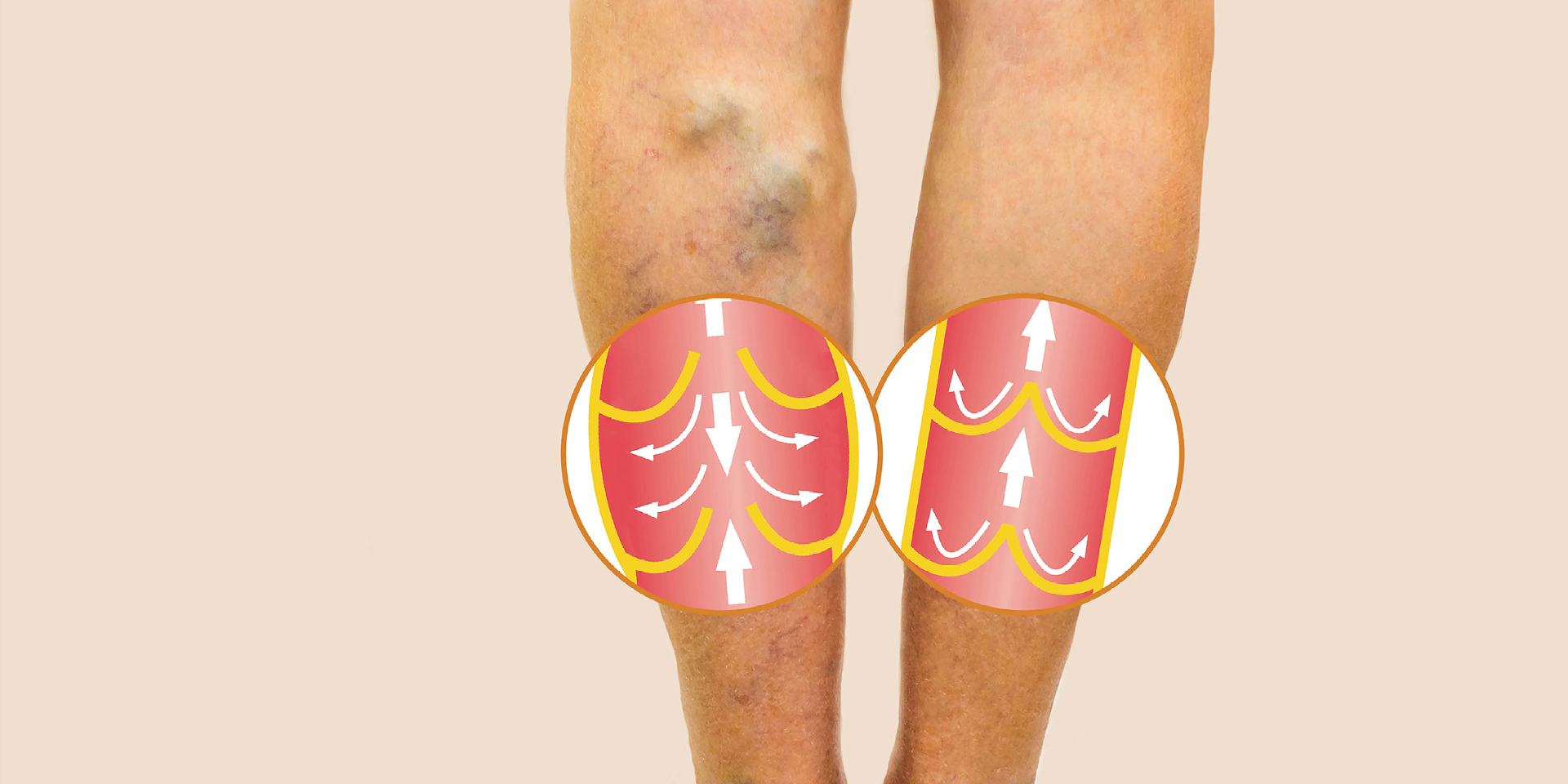You may not be familiar with the terms venous insufficiency or Chronic Venous Insufficiency (CVI). However, the chances are good that you are familiar with the signs and symptoms of this common disorder. Many people have the milder form of the disease—spider veins and varicose veins. While unlikely to cause any serious health problems, these red, purple, and enlarged twisted veins can be symptomatic and the source of significant cosmetic concern. More advanced forms of the disease can lead to serious complications and cause chronic health issues.
What Is Chronic Venous Insufficiency?
Under normal circumstances, in both the arteries and the veins, blood flow is continuous and moves in one direction. Within the veins of the legs, numerous valves help to accomplish this goal as blood moves from the feet back to the heart. According to Timothy L. Donegan, MD, of Doylestown Radiology Associates and Doylestown Health Vein Center, when these valves are not functioning properly, blood may go back down into the legs, causing blood to pool. This can lead to spider or varicose veins, or edema.
In severe cases, the skin can change color and develop a leathery texture. Skin breakdown or ulcers (skin sores) may subsequently form. These sores are difficult to heal and can sometimes lead to infection. If you have any CVI symptoms, including leg pain, swelling, cramping, skin color changes, itchiness and leg heaviness, it is important that you speak to your doctor. Treatment can alleviate these symptoms and prevent progression to more serious disease.
What Causes CVI?
The causes of chronic venous insufficiency include:
- Genetics (if one parent had vein problems, his or her children have about a 60 percent chance of developing them as well. That number goes up to 90 percent if both parents had vein issues, according to Dr. Donegan)
- Being female (especially after childbirth)
- Obesity
- Standing for long periods
- Smoking
- Damage to leg veins from prior blood clots
How is Venous Insufficiency Diagnosed?
Dr. Donegan explains that CVI is diagnosed using a dedicated ultrasound evaluation of the legs, which can precisely assess the speed and direction of the veins' blood flow and size. These ultrasound findings often confirm what is found during a physical exam.
What Can I Do to Prevent or Manage CVI?
Compression stockings or wraps are a mainstay of conservative therapy, according to Dr. Donegan. These stockings can be purchased online or at a medical supply store. He recommends compression strength of at least 20-30 mm Hg. Additionally, exercise and weight loss can help with symptoms.
How is CVI Treated?
There are several different ways to treat abnormal or varicose veins in the legs, says Dr. Donegan. Traditionally, these veins were physically removed by a process called phlebectomy. He explains that at the Vein and Laser Center “we prefer a more minimally invasive outpatient approach. This entails placing a small catheter or tube in the vein and using either a radiofrequency probe or laser to seal the vein shut. Sometimes we add sclerotherapy treatment, where a dilute medication is injected into the vein leading to a similar process of closure.”
When Should I Seek Treatment?
It depends on your treatment goals, says Dr. Donegan. If you only have spider veins and worry about their cosmetic appearance, these can be successfully treated but often without insurance coverage. Varicose veins, which can be unsightly as well and also symptomatic (i.e. painful, throbbing, itchy), can often be successfully treated and covered by insurance after a trial of compression therapy.
Dr. Donegan emphasizes that all wounds or skin ulceration related to venous problems (that is, your leg veins don’t allow proper blood to flow back up to your heart) should be treated as soon as possible to speed wound healing and prevent a recurrence.
Schedule an Appointment
To schedule an appointment with a board-certified interventional radiologist, please call 215.918.5849.
About Doylestown Health
Doylestown Health is a comprehensive healthcare system of inpatient, outpatient, and wellness education services connected to meet the health needs of the local and regional community. The flagship of Doylestown Health is Doylestown Hospital, a not-for-profit, community teaching hospital with 245 beds and a medical staff of more than 600 providers who deliver the highest quality care in over 50 specialties. Renowned locally, regionally, and nationally, Doylestown Hospital provides superior healthcare and offers advanced surgical procedures, innovative medical treatments, and comprehensive specialty services. Serving Bucks County for over 100 years, Doylestown Hospital is proud to educate and train the next generation of physicians through its family medicine residency program. Ranked as one of the World’s Best Hospitals by Newsweek and 9th in Pennsylvania, Doylestown Hospital is distinguished in both infection prevention and patient experience. Doylestown Hospital is the only hospital in Pennsylvania to achieve 18 consecutive ‘A’ grades for patient safety from Leapfrog Hospital Safety Grade. Learn more at doylestownhealth.org.
